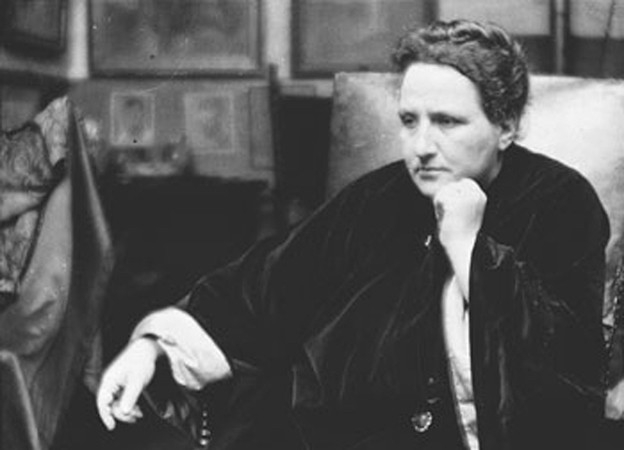'A Long Dress'

A long dress walks independently, down your street, any street. The “current that presents a long line” is also your leg, an ambling thought-object. A long dress in Stein is shorn, woven of substantial “crackle.” Use it to carry live ingredients, figments, ammunition, endearments, “machinery.” Employ a long dress to navigate “current” or “serene length.”
Engage a long dress to compile the histories of a “necessary waist.”
A long dress is composed of the form of everything it grazes. Touches your eye. What is the purpose of an object? Certainly not to be objective. Certainly you may object. To getting dressed. A long dress, like convention, may exist to be ruined, flaunted, or remade as a ceremony — undressing expectation.
What is a word garment? And what is the purpose of purposefulness? It is easier to walk down a word century or to become ensnared in discreet thickets when wearing a long dress. A dress made of words. However, one could also wear “Glazed Glitter,” “A Piece of Coffee,” a “Red Stamp,” or “Mildred’s Umbrella.” I’d like to be “A Method of Cloak” and also “A Piano.”
“What is the wind, what is it.” Wind disarranges objects into word trajectories and accessories. Wind disarranges the books that words-objects read; for instance, Harryette Mullen wrote Trimmings (published by Tender Buttons Press) considering word-artifice, word-paraphernalia, dressing rooms of gender undone and adorned. What prescription is a long dress for gaze, gape, bedraggled shoulders, of subjective-associative feasts? Which dress-objects do we whisper or fling?
If “serene” is “a dark place is not a dark place” and “only a white and red are black, only yellow and green are blue, a pink is scarlet, a bow is every color,” then what is the objective aim of a long dress? In Tender Buttons, a dress is not a dress, is hardly an object. A dress becomes a stance, an argument, or reflective surface inhabited. A long dress is a word portrait — to gather — a textual body — walks out into a field of color, plucks, arranges. A verbal trance hemmed. A lingual cluster about the neckline. Wash your face in such a dress. Cover your table. Ignite your maps. Unbutton your fingers. A long dress laughs, slips, and lifts. What unspoken vow have you made when “a bow is every color”? What unspoken bow have you borrowed? You have pulled “current” and “wind” and “serenity” and “darkness” and “color” from “machinery.”
“A line just distinguishes it.” Which signals both the line of the body, the line of the eye and also a moving portrait in words, a still life which is never still. “A bow is every color” is also a concentration palette, a slab of “Piano,” a “Red Hat,” of “A Frightful Release,” “Water Raining,” and “A Feather.”